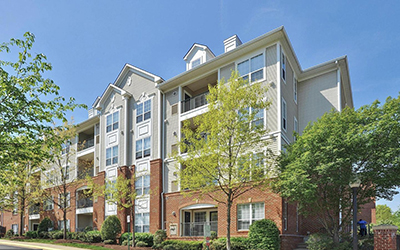
Multifamily Professionals See Increased Demand in Second Half

The multifamily market is seeing increased demand despite rising rent and interest rates, reported Berkadia, New York.
Berkadia surveyed 123 mortgage bankers and investment sales agents for its Mid-Year Powerhouse Poll. It found 80% of those surveyed expect multifamily rental demand will continue to outpace supply for the remainder of 2022.
“Despite rising interest rates and persistent inflation, the commercial real estate industry will continue to exhibit resiliency,” said Ernie Katai, Executive Vice President and Head of Production at Berkadia. “With the rising cost of homes and interest rates, the renter lifestyle has increased investor demand in primary and secondary markets across the country.”
Investor demand for multifamily properties differs across regions, with some seeing higher interest than others as migration patterns shift due to evolving renter demands. Berkadia noted the Southeast region has seen an increase and the Western region has seen a decrease in demand. Additionally, survey respondents across the Southeast, Southwest and West agree that they have seen a moderate increase in property supply in their regions.
“Following the same pattern as last year and despite rising rental rates, the market continues to see an increase in property supply and investor demand,” the report said. Despite a steady increase in properties, 80% of the mortgage bankers and investment sales agents surveyed said rising interest rates and inflation are affecting their local market. Additionally, 94% agreed rent increases will have a significant influence on deal volume in the multifamily industry.
When asked about the generation that will make up the highest percentage of multifamily renters in the next one to two years, 80% cited millennials aged 25-40, up from 74% last year. “Our survey indicated that Baby Boomers most commonly rent Single-Family Rental or Build-For-Rent housing and Gen Z are often renting Workforce housing,” the report noted.
When asked about renters’ most important consideration today other than cost, 72% said location. But while many people continue to move away from metropolitan areas, 59% of people surveyed agreed this trend has slowed compared to the height of the pandemic. Additionally, investor focus remains on Class A (40%) Class B (25%), Affordable (15%) and SFR/BFR (13%), specifically with the Southwest seeing high Class A demand (74%) and the Midwest favoring Class B (47%).
When asked what capital source would provide the most activity in 2022, survey respondents said private investors (59%), followed by institutional investors (31%). One factor rapidly growing in importance to these investor groups is the integration of ESG within portfolios. When asked how investors are addressing this, most said investment properties are being used to meet ESG metrics (44%) or properties are being converted to comply with energy-efficiency policies (20%).
“The importance of ESG in our industry is undeniable, and these strategies have become imperative for portfolios to create a sustainable and responsible business,” Katai said. “While demand for ESG integration will continue to evolve, this is something that investors will focus on for years to come.”
